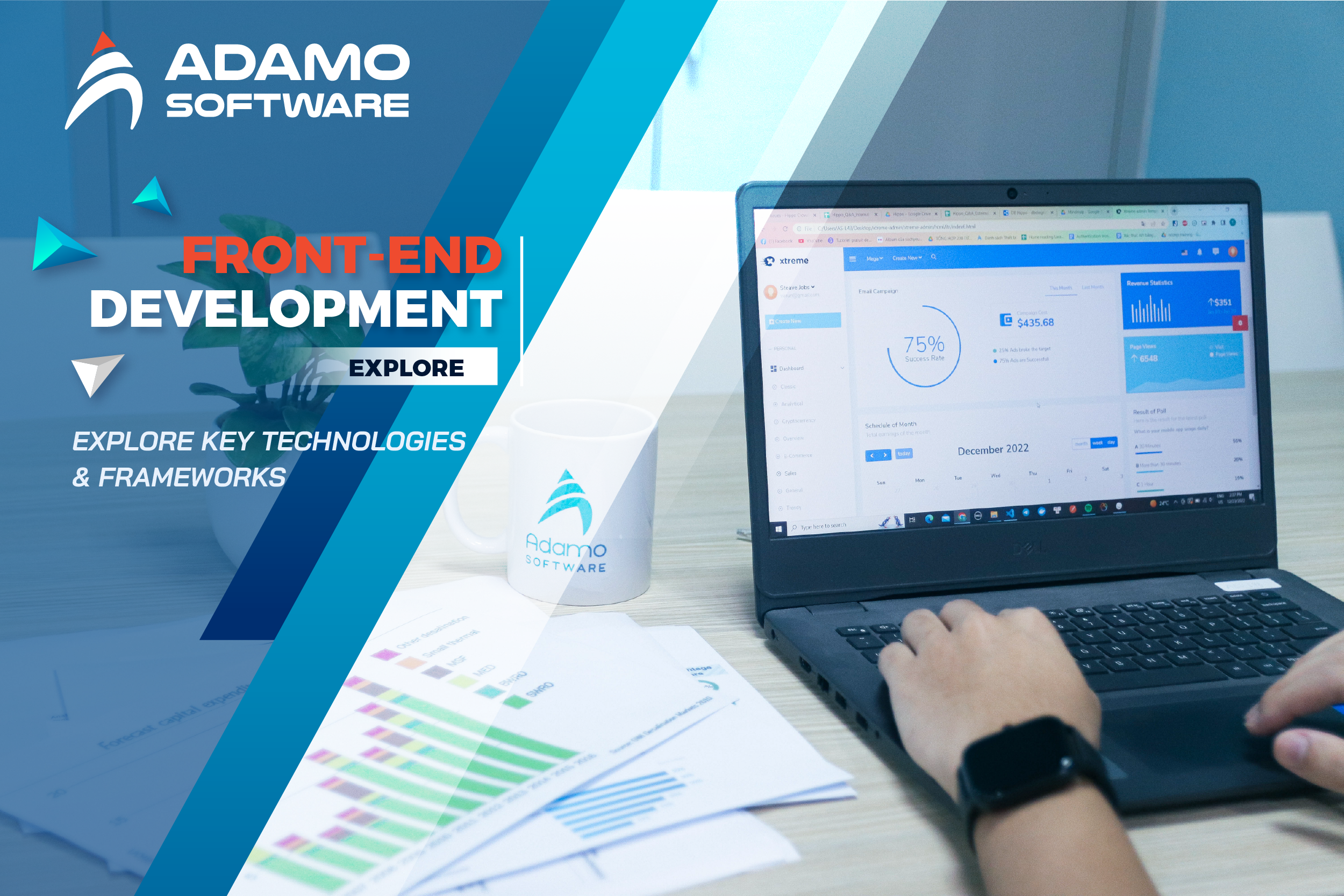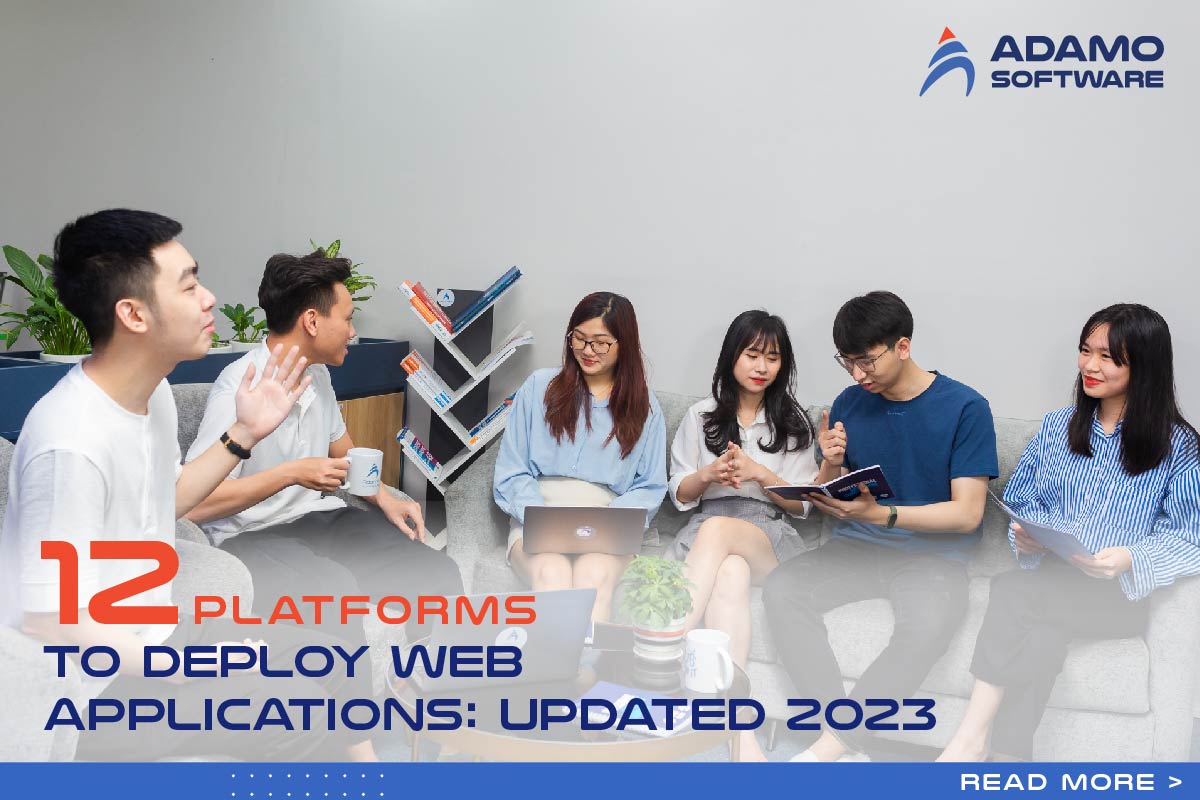Back-end Development: Everything You Need to Know about Web & App Development

Back-end development, also known as server-side development, is the creation of the logic that runs behind the scenes in web applications.
These days, no one can live without apps. Everyone uses apps all the time, whether it’s to share photos with friends and family, order food, or do banking. Most of the time, these apps make using them simple and smooth. But have you ever wondered how they do that? Thanks are due to the bacckend of the app, which does all the important work that you can’t see.
Everything that is on the server is part of back-end work. This includes issues with planning and storing data as well as safety. Back-end development builds and takes care of the systems that let users connect with the front end of a website.
I. What is backend development?
Back-end development focuses on server-side software or the components of a website that are not visible to the user. With an emphasis on servers, databases, back-end logic, APIs, and architecture, back-end developers guarantee the proper operation of the website. They facilitate code that enables browsers to store, understand, and delete data, as well as communicate with databases.

The backend contains three main parts:
– Database: A database allows us to store a large amount of information in an efficient and structured manner when compared to keeping such information in a text file.
– Server: A server, which is a computer that responds to user requests via the front-end interface (client), computers a result on behalf of the application.
– Application: An application is a computer software that monitors the server for requests, retrieves information from the database, and responds to the server.
On a team, back-end developers create the framework of a website or mobile application in collaboration with front-end developers, product managers, principal architects, and website testers. Developers of back-end systems must know a wide variety of frameworks and tools, in addition to programming languages like Ruby, Python, and Java. They ensure that the back end responds to requests from the front end promptly.
Explore more on What is front-end development? Explore technology, framework
II. Why is backend development services important?
Back-end development is vital to the success of a web application, although it is not readily apparent to end users. It oversees the delivery of the outcomes of the front-end development procedures to site visitors, in addition to managing the business logic of the website.
1. Security
A framework provides security from multiple perspectives. Security against external threats and issues, failures, sluggishness, and other detrimental factors may compromise the quality of the application you are developing.
2. Scalability
Frameworks possess a high degree of adaptability. Consider the scenario where you have selected the most suitable back-end development framework for your undertaking. Using that framework thereafter would enable you to develop your web application incrementally, progressing from rudimentary to intricate features.
3. Performance
The management of a website’s efficacy occurs in the backend. Modern web users expect that pages to load fast, and a substantial portion of back-end development enables this.
III. How to become a backend developer
1. What does a back-end developer do?
Understanding the duties of a back-end developer is the initial requirement for new back-end developers. The responsibility of constructing, maintaining, and troubleshooting the server-side component of a web application falls on back-end developers. They construct the code that enables the delivery of a web page to a user. Whether or not they are working on a complex application, this may be an enormous responsibility.
Here are some of the daily tasks of a back-end developer:
– Manage application infrastructure: Configure the networking, servers, and databases that applications will utilize.
– Design application architecture: Develop the architecture of the application and devise how its components will exchange information.
– Maintain and interact with databases: These engineers may be proficient in SQL and develop code that facilitates communication between databases and other programming languages.
– Develop APIs: Application programming interfaces (APIs) facilitate the exchange of data between two applications. This would be a REST API in the case of a website, which supplies the necessary data to the front-end code for it to operate.
– Write back-end code: The back end of an application contains the majority of its business principles. Code dictates, for instance, which resources are accessible to which users and what occurs to the data submitted by a form visitor.
– Optimize performance: To guarantee the prompt delivery of websites, back-end developers employ a logging and monitoring mechanism to identify and rectify any performance obstacles.
– Secure applications: Ensure the encryption of data and connections and the protection of applications against cyberattacks.
2. Back-end developer skills
A back-end developer will possess a wide range of technical expertise. They will have experience with operating systems, servers, databases, email, programming languages, etc., and will have a minimum of one programming language knowledge (and likely more). However, they require more than technical expertise to complete the task.
– Problem-solving: Developers must know more than just how to create code. They must be able to plan and understand how their code will operate before it executes, as well as leverage what they know about programming to address business challenges in creative ways.
– Communication: Users and business executives leaders must collaborate with developers to create applications that meet their needs. Therefore, this requires developers to comprehend the requirements of non-technical individuals as well as clarify complex processes to them.
– Industry knowledge: Proficient back-end developers remain abreast of the most recent technological developments to guarantee optimal performance and security for their applications.
IV. Backend frameworks: Types & Frequently-used frameworks
1. Types of back-end development frameworks
a. Client-side web framework
This framework is user interface-only in nature. The user experience and the simplicity of the application’s operation are both components of the client side.
b. Server-side web framework
Back-end functionalities, including but not limited to database manipulation, data, and web server administration, are implemented using this category of framework.
2. Most frequently-used frameworks
2.1. ASP.NET Core
ASP.NET Core is an open-source, cross-platform framework. You can construct and execute applications across multiple platforms and environments using this framework, which is a lightweight implementation of the Microsoft server architecture. Numerous programming languages, such as C#, F#, Visual Basic, NodeJS, and JavaScript, can be utilized to construct web applications and API servers the platform supports.
Benefits of ASP.NET Core:
– A framework for the backend of ASP.NET is JavaScript, one of the most widely used programming languages.
– It requires minimal coding.
– Performance enhancement is one of the most notable advantages of ASP.NET Core, which makes it the ideal framework for backend development.
In the context of creating mobile or web applications intended for Windows users, the most optimal architecture to utilize as the back-end development language and framework is ASP.NET Core.
2.2. Django
Django is a Python-based open-source web framework that adheres to the architectural pattern of a model–view–controller. It specializes in developing complex, database-driven websites. Therefore, Django is the optimal solution if achieving a high-performance website is of the utmost importance to you.
Benefits of Django:
– Scalability: Django’s code reusability functionality simplifies the process for developers to adapt to the growing volume of website traffic.
– SEO-oriented: The resulting websites are straightforward to optimize and render SEO-friendly. An active community is at the disposal of any individual utilizing this framework, owing to its widespread popularity.
– Django is not a No Code framework, although it is No Code-oriented and has certain No Code capabilities. There are various packages available to programmers that do not require them to write any code.
– It includes SQL injection prevention, XSS protection, password hashing, and other web app security features. As a result, your online application will be safe from dangerous hacker attempts.
Django is one of the most popular back-end development frameworks for constructing database-driven websites.
2.3. Laravel
As a server-side programming language, PHP underpins 76.8% of all websites. As a result of its enhanced security and accelerated development time, PHP and its framework have emerged as the platform of choice for web developers.
Laravel is one of the best PHP server frameworks that you can find on the web. The purpose of this open-source is to make symphony-based web apps. Therefore, Laravel is the best choice if you want to focus on back-end development.
Benefits of Laravel:
– It has a lot of safety features and uses formulas to make strong passwords that keep them very safe.
– Laravel has tools that work with code other than PHP, such as CSS and JS.
– It’s best at making complicated projects.
– One of the most noticeable features of Laravel is the simple API that interfaces with the SwiftMailer Library.
Laravel may be better suited for newcomers. However, it is complicated when it comes to managing a simple or small project. It is best suited to experienced developers who want to work on difficult projects.
2.4. Ruby on Rails
The Ruby on Rails framework is renowned for its user-friendliness and its ability to support the entire system. The primary objective of the framework is to streamline the process of developing web applications by eliminating a substantial portion of the laborious tasks involved. While the framework manages the infrastructure (components), you can concentrate on the critical aspect—the code of your application.
Despite lacking widespread programming language adoption, this backend framework remains popular due to its ability to facilitate the programming process for developers through automated testing, libraries, and support.
Benefits of Ruby on Rails:
– Data synchronization and real-time updates
– It is very adaptive and flexible since it allows developers complete control over their projects, allowing them to specify how the application database should perform.
2.5. Express.js
Express is a Node.js backend framework for building APIs and online applications. It is a backend component of the MEAN stack, together with the Angular JS frontend and NoSQL databases. Furthermore, it is regarded as one of the best back-end development frameworks for creating Internet apps.
Benefits of Express.js:
– This is one of the easiest programs to learn how to code. Using a backend JavaScript framework running environment, Node.js developers can make both frontend and backend web apps. This makes it the most popular back-end development framework.
– Save you a lot of time and money.
– It provides good performance.
2.6. CakePHP
Cake PHP makes custom web development easy by giving you a framework that you can use to start making web apps.
Benefits of CakePHP:
– Highly scalable.
– It is suitable for simple or basic projects.
2.7. Flask
As a WSGI framework, Flask operates on the web server as opposed to the user’s browser. Because it enables the development of individualized projects that execute seamlessly, numerous contemporary applications operate on Flask. It provides support for feature-adding extensions that may give the impression that they were integrated directly into Flask.
Benefits of Flask:
– Flask includes an integrated web development server that enhances debugging capabilities and empowers programmers to execute Python code in the browser in the event of failed queries.
– Flask facilitates the establishment of web servers.
2.8. Spring Boot
The Spring Boot framework is again an open-source design that implements the JavaScript backend framework. It provides a robust, modular, and configurable environment for developing complex enterprise-grade applications.
Benefits of Spring Boot:
– As a result of the included side projects, Spring is exceptionally scalable. It is one of its most prominent advantages. As a result, Spring Boot is the ideal framework for backend development.
– Spring is well-liked and has a big support base. This is because it is based on the powerful programming language Java.
2.9. Koa
Koa is an open-source, simple, and adaptable Node.js backend system. It has been one of the best platforms for making apps with Node.js. Moreover, it gets rid of callbacks and greatly improves error handling by using async functions. In addition, it lets users choose from several quick server writing methods and doesn’t include any basic middleware.
Benefits of Koa:
– Completely customizable.
– Scalable and adaptable.
– It develops apps quickly.
– The browser-focused design simplifies rendering and templating.
2.10. Phoenix
Phoenix is a powerful Elixir and Erlang web app framework. It uses Erlang and Elixir, a Ruby-like programming language, to build fault-tolerant apps. Moreover, it allows real-time client communication via WebSocket and agnostic channels and Cowboy server request/response.
Benefits of Phoenix:
– The backend is reliable for web apps.
– It supports concurrency and running many processes independently.
– Users won’t need the complicated messaging system or third-party programs to maintain cache tiers.
V. Backend development plan for web & app development
1. Discovery and conceptualization
Duration: 2-6 weeks
To properly plan the back end, it’s important to understand the business concept, requirements, and processes underlying the software that you intend to develop. Business consultants and software architects debate software kind, anticipated and actual user count, integrations, and on-premises or cloud hosting. Thanks to that, they define the future back end’s functional and non-functional requirements, risks, and restrictions using the knowledge gathered.
2. Back-end architecture design
Duration: 4-8 weeks
The solution’s supporting structure is the back-end system design. If the architecture isn’t well thought out, the whole answer fails, even if the front-end code is very good and the back-end code is very clean. Because of this, picking the right architectural style and explaining it needs a lot of thought. Usually, this process has 5 steps:
2.1. Analysis
A software architect meets with you to discuss back-end needs and limitations to identify the must-have and nice-to-have criteria for the final solution.
2.2. Design and pattern choice
The architect develops various back-end architectural solutions, classifies them based on the criteria, and selects the one that best meets your demands.
2.3. Decomposition
To make back-end implementation easier, the architect breaks the design into smaller parts.
2.4. Approval
The architect shows you the main back-end design, tells you about the choices they made about the technology stack (the computer languages, frameworks, and database types), and discusses your back-end hosting options.
2.5. Documentation
As a back-end implementation step-by-step guide, the architect tells the development team what parts to build and how to connect them. A project manager (PM) uses this implementation plan to figure out how much work the project will take, pick a development method, and make a specific project schedule.
3. Back-end software development and QA
Duration: from 2 months
Back-end architects plan the layout of the back end, and back-end developers build server-side software with scripts, algorithms, and APIs. This software will be hosted in the cloud or, less often these days, on-premises and will control the whole solution. Then, QA experts work directly with developers to test given code both manually and automatically all the time.
4. Database development and setup
Duration: From 1 month
On its own, database development is not always a separate service. However, back-end devs usually set up the database and APIs as part of the solution they work on. When you put your website in the cloud, cloud database services help spread your data across multiple virtual machines so that you can still access it even if some of the machines are down.
5. Deployment and Integration
Duration: 1-3 weeks
After the implementation is complete, the back-end software and databases may be deployed either on-premises or in the cloud, and they may be integrated with both the client-end and other third-party software. With careful planning of these integrations during the initial phase of the back-end development project, it is unlikely that unforeseen circumstances will result in any disruptions to the launch of your back end.
VI. Why Choose Adamo to Build Your Backend Software Development Services
As working in a software development service industry for many years, Adamo Software will consider three main aspects including easily allocating human resources, promptly shortening time to the market and offering lucrative software solutions for most clients. Our developers possess strong skills and experiences in developing back-end software solutions and web-based solutions in diverse industries. Thus, we are all confident as a trusted backend software development company for you.











